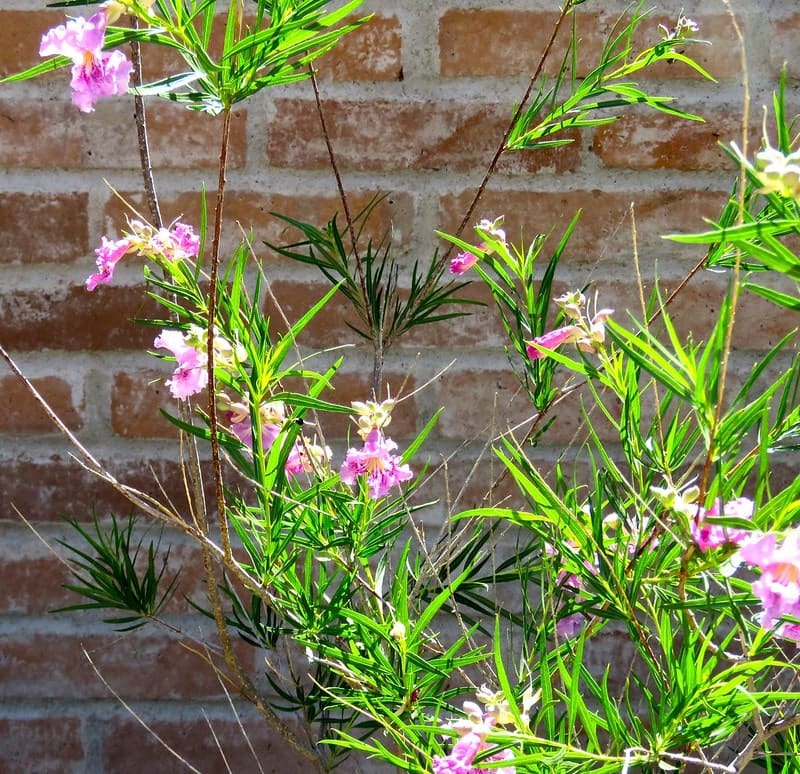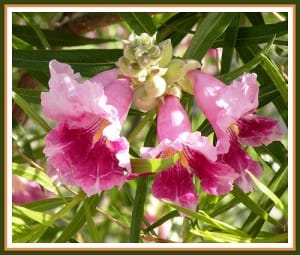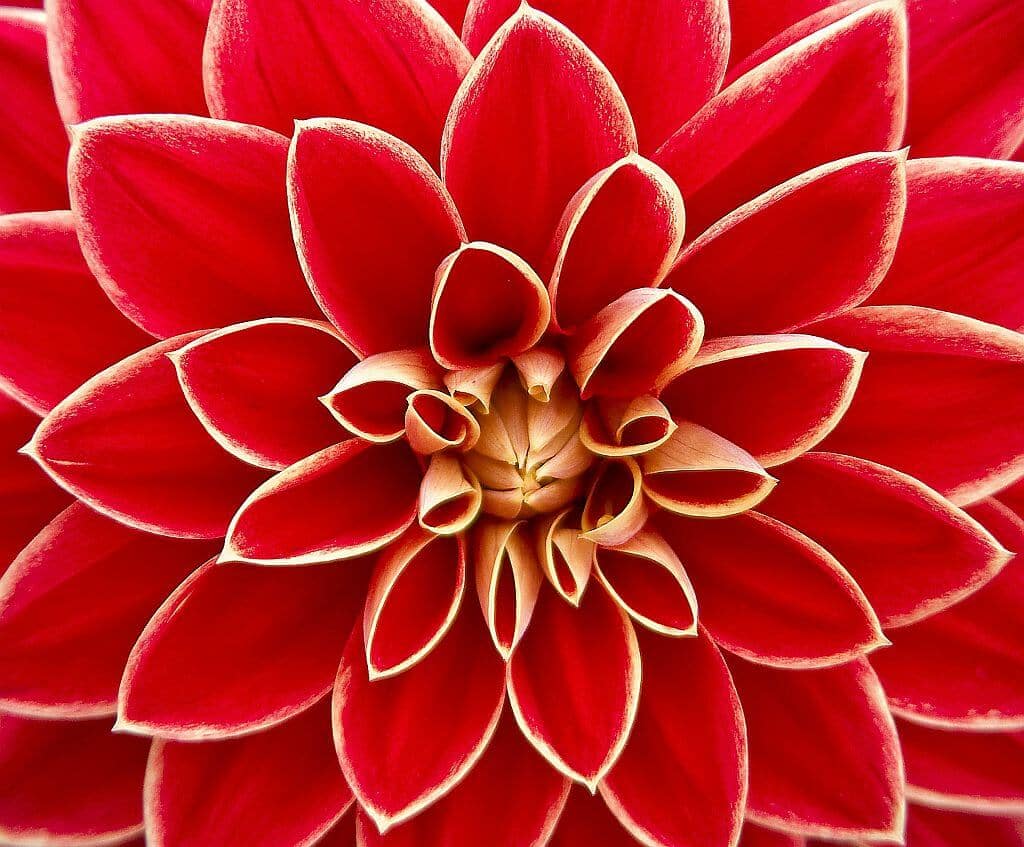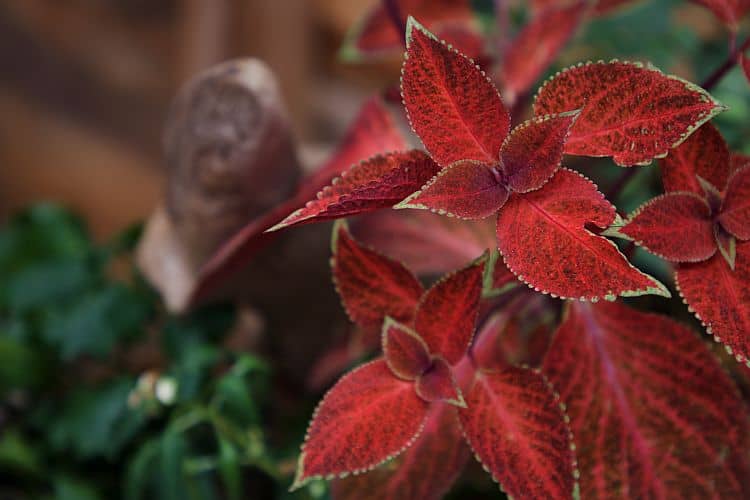This post may contain affiliate links. As an Amazon Associate we earn from qualifying purchases.
My desert willow seed germination experiment
It wasn’t a scientific test by any measure, but I played around with some desert willow seeds that I plucked from a neighborhood tree and came up with some interesting results.
I’m a staunch soilless medium fan. I’ve had horrid luck with potting soil, compost and the like when it comes to seed germination. Damping off follows my germination efforts around like the grim reaper.
If you’re new to gardening, damping off is the nickname of a fungal disease that kills seeds and seedlings. If you’ve ever had a seedling sort of fold over, in the middle of its tender little stem, and fade away, it probably suffered from damping off. Sometimes fungicide soil drenches or dusting seeds with fungicide powder works. Sometimes it doesn’t. Germination media without soil works for me. Usually.
Anyway, back to the desert willow experiment
My sample size included a whopping eight desert willow seeds. These seeds look like something you’d find in a piece of really good whole-grain bread: rather flat, oval and brown. The only difference between the seed in bread and that of the desert willow is that the latter is surrounded by fuzz and it has wings.
The first two seeds — hereafter known as “Batch 1” — got wrapped in a damp paper towel, placed in a sealed plastic container and left in the refrigerator for two weeks. Why two weeks? Couldn’t tell ya.
The next two –“Batch 2” — were pushed into a pot of coarse sand, placed in a lightly shaded area outdoors.
Batch 3 ended up in standard, but high-quality, commercial potting soil, placed in the same area as batch 2 .
The final set of seeds were direct seeded into the garden, covered with sand and watered once a day (it’s super hot out right now).

We have germination
Desert willow seed germination turned out to be as easy as I thought.
The only germination that has occurred is from batches 2 and 3. Batch 2 — the desert willow seeds planted in sand — germinated within three days. Although batch 3 — those sowed in potting soil — took two days longer to germinate, they are stronger and taller than those in batch 2. And, despite the somewhat shady area, one of the Batch 1 seedlings has what looks like leaf scorch on one of its tiny leaves.
The only difference in the desert willow seeds’ pre-germination treatment is the planting medium: potting soil versus sand. The difference in the seedling’s vigor, therefore, may be the result of several issues. My first thought is that the desert willow seedlings are stronger and taller because of the fertilizer typically included in commercial potting soils.
The extra moisture-holding capacity of the potting soil may be another reason. Although the desert willow is, as the name suggests, a desert dweller, it flourishes in the desert’s washes, ditches and depressions — anywhere that water gathers, even if it quickly drains away. Perhaps the seedlings’ roots grow stronger, quicker in a somewhat more moist environment than coarse builder’s sand provides.
Other than the different soils, the four seeds were from the same pod, planted in the same amount of sun, in the same temperature and provided the same amount of water.
Desert willow trees are common in the southwest: Texas, Arizona, California and Nevada. Their ferny foliage and orchid-like flowers provide striking relief to a desert backdrop. If you plan on germinating desert willow trees — which I have seen for sale at online retailers for $50 — my advice is to sow them in a good potting soil and frequently check the soil moisture. Once they’re successfully propagated they’re quite drought-tolerant.
Worked for me.
Photo Courtesy: Garlandcannon/Flickr.com




You did not say when you gather the seeds, fall or spring.
Hi Jean,
Since the fresher the seeds, the better the results, I would look for mature pods in fall and plant immediately, keeping them indoors if necessary over the winter. That said, you can also collect them in early spring, but fall is best.
Good luck!
My seedlings seem to fall over and die after they’re a couple weeks old. Any suggestions for preventing this?
Hello I know this is a old post but was looking for some help. I have been trying to grow These from seed with no luck. They germinate almost immediately but soon after they succumb to damping off. I’ve tried it in potting soil and sand and still get the same results. Any help would be appreciated.
I did a similar experiment. I put 10 seeds in potting mix, 10 seeds in 100% turface with pumice on the bottom of the pot but topped with a 1/4” of play sand. Seeds sowed in the sand. Then I sowed 5 seeds individually in small pots with 50/50 mix of x-small akadama / kiryu (coarse sand) mix. By far the most vigorous are the ones in turface topped with sand. The ones in potting mix have been half eaten my some little black worm. They don’t look that good but are growing. The akadama ones look good but are growing super slow. I hate potting mix as well and turface or turface pumice mix has been my go to for a while. I can’t lie though, I do love the akadama / kiryu mix as well.
I planted 6 seeds in potting soil in small pots, and only on came up. I am thinking it may be a weed. I cannot find a picture of a sprouting desert willow seed. I hate to waste my time nurturing a weed. It is has thin leaves growing out of the soil. It’s about 6” high now. How can I be sure it’s not a weed?
Hi Marian,
I wish I would’ve photographed mine. I’m much better at that now. In the meantime, I found a photo online. Check it out: https://theferalbones.com/products/desert-willow-seeds
See my reply to Marian. There’s a lovely photo there of a desert willow seedling.
Somehow I didn’t notice this response. I apologize. Try putting a fan near the seedlings. Aim it so that it’s blowing air OVER the seedlings, not right at them. Don’t overwater them. Let the soil dry out to the touch, at least. Hope this helps, Reyes.